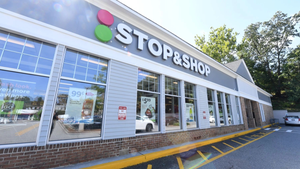How you should be doing health and beauty differentlyHow you should be doing health and beauty differently
A key trend is the premiumization and specialization of the aisles
February 16, 2024

Supermarket health and beauty aisles are in line for a makeover.
While many stores typically focus on offering a limited number of basic selections, more operators are seeking to compete with specialty retailers and other merchandisers by expanding their product arrays to include additional national, local, prestige, and value offerings, analysts said.
A key trend is the premiumization and specialization of the aisles, said Emilie Hood, senior research analyst, beauty research, for Euromonitor International, a London-based market research firm. More supermarkets are devoting additional space to the categories and transforming the aisles into “dedicated beauty spaces that more closely resemble the setup of beauty specialists that offer more premium brands,” she said.
Such activities can help supermarkets compete with the specialty and online beauty retailers that are able to maintain broader assortments, including higher-end prestige brands, while having the ability to support a higher degree of newness in their product portfolios, said Matt Garfield, managing director within the retail and consumer products practice at Washington, D.C.-based FTI Consulting.
Because of space limitations, supermarkets tend to attract convenience-oriented and casual beauty shoppers rather than “beauty enthusiasts” who prefer a wider array of higher-end brands and a high frequency of new products on the shelves, he said.
“There is such a range of brands available that consumers often choose to use specialists to minimize trips or the cost of shipping by getting their products from multiple categories in one place,” Hood said.
Yet more supermarket shoppers are expanding their purchasing of health and beauty care (HBC) selections because of product innovations and the spotlighting of newer options on social media, said Kristin Goetz, center store director — dairy, frozen, pet, baby, household, and HBC, for Tops Friendly Markets, a Williamsville, N.Y.-based operator of 149 supermarkets in New York, Pennsylvania, and Vermont.
To help keep the category vibrant, Tops regularly reviews product mixes; collaborates with suppliers to offer new and trending items; situates seasonally relevant perimeter displays; and spotlights products in ads, Goetz said.
Tops offers a mix of value, national, and premium products, including selections under the private label Top-Care line, such as first aid, vitamins, over-the-counter drugs, and beauty care offerings. In addition, the chain is marketing products from local vendors, including those from low-income zip codes across Western New York.
Competition is brutal
A major competitive issue is the need to retain and attract customers who can also purchase HBC products from a wide range of retail channels, including food, drug, online, big box, and discount stores, Goetz said. “Grocery store shoppers don’t necessarily have HBC items on their shopping lists,” she said. “It is a challenge to get customers down the HBC aisles as they are not accustomed to making regular purchases of HBC items at the grocery store.”
To help spotlight selections, Tops is partnering with cosmetic vendors to install a universal wall-lighted fixture in an active remodel store. “This aesthetically pleasing, modern design will perceivably draw consumers to the space and stimulate sales growth,” Goetz said. “If successful, this universal wall will potentially be placed in all future remodel locations.”
Tops also is distributing coupons that offer savings on gas for purchasing HBC products; providing HBC instant savings coupons; and targeting the 60-and-older shopper with a “Young at Heart” discount on specific HBC products the first Tuesday of each month, Goetz said.
Retailers, meanwhile, should analyze trends in their specific regions when determining the most pertinent health and beauty products to offer, Hood said, as well as the demographics of a store’s customers, including age. “Skincare has been consistently performing well over the previous few years in spite of economic difficulties, so it would be the obvious category to focus on,” she said.
Growing interest in skincare by pre-teens and teens is indeed creating additional sales opportunities for supermarkets, Garfield said, adding that operators should focus on categories that appeal to the broadest consumer demographics, such as skin, while providing the core essentials from other categories to maintain convenience and attract casual beauty shoppers.
“This requires a consistent focus on the assortment to determine what is working well and what needs to change,” he said.
There also is often a need to increase store shelf space to offer a more diverse assortment of color cosmetics to serve additional shopper segments, Garfield said. “The market has shifted toward inclusiveness and offering a diverse assortment of color cosmetics to connect with consumers of all skin types and colors,” he said. “It challenges supermarkets to accommodate a broader portfolio of SKUs.”
Personal offers and unique options will help drive more consumers to the health and beauty aisle as well, Garfield said, adding that product signage and on-shelf messaging can trigger further activity.
Back to the basics
Because just 10% of U.S. makeup wearers purchase the products in supermarkets or grocery stores, it is important that retailers offer products from multiple categories, including skincare, body care, and hair care, said Larissa Jensen, beauty industry advisor for Circana, a Chicago-based market research firm.
To help boost activity, retailers can group all selections on shelves by type, “because that’s how consumers food shop,” Jensen said, while also creating displays or end caps with a trend-driven focus, such as for natural products. “Many consumers aren’t looking for very premium brands in supermarkets and often will just pick things up as a spur-of-the-moment purchase,” she said.
Supermarkets looking to expand beyond the basics, however, “can identify trends by looking at what is winning in prestige retailers,” Jensen said.
About the Author
You May Also Like






